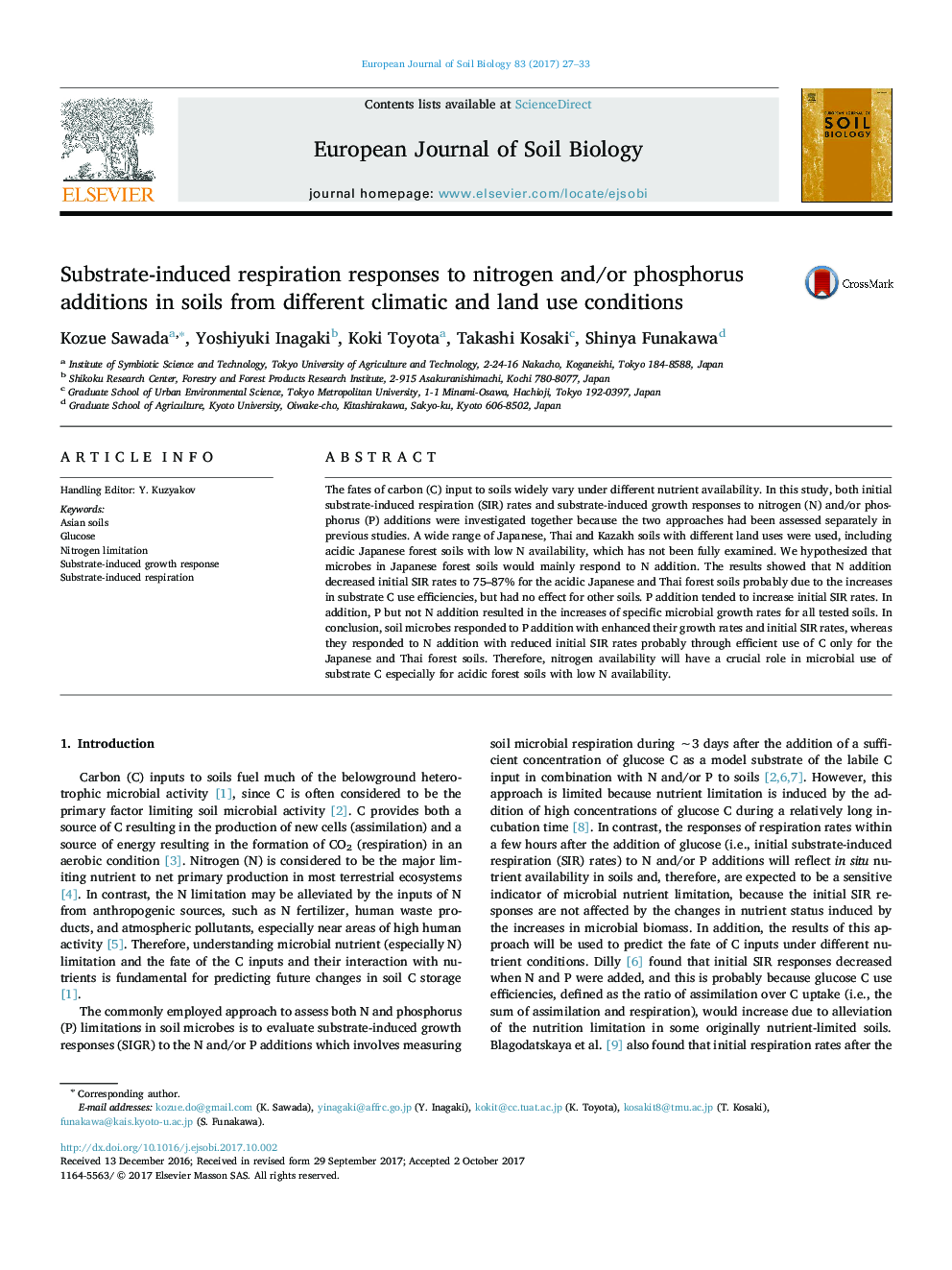| Article ID | Journal | Published Year | Pages | File Type |
|---|---|---|---|---|
| 5744171 | European Journal of Soil Biology | 2017 | 7 Pages |
â¢The effects of N and P additions on SIR were examined in various Asian soils.â¢Both initial SIR rates and SIGR to N and/or P additions were investigated together.â¢N but not P addition decreased initial SIR rates only in acidic forest soils.â¢P but not N addition increased specific microbial growth rates.
The fates of carbon (C) input to soils widely vary under different nutrient availability. In this study, both initial substrate-induced respiration (SIR) rates and substrate-induced growth responses to nitrogen (N) and/or phosphorus (P) additions were investigated together because the two approaches had been assessed separately in previous studies. A wide range of Japanese, Thai and Kazakh soils with different land uses were used, including acidic Japanese forest soils with low N availability, which has not been fully examined. We hypothesized that microbes in Japanese forest soils would mainly respond to N addition. The results showed that N addition decreased initial SIR rates to 75-87% for the acidic Japanese and Thai forest soils probably due to the increases in substrate C use efficiencies, but had no effect for other soils. P addition tended to increase initial SIR rates. In addition, P but not N addition resulted in the increases of specific microbial growth rates for all tested soils. In conclusion, soil microbes responded to P addition with enhanced their growth rates and initial SIR rates, whereas they responded to N addition with reduced initial SIR rates probably through efficient use of C only for the Japanese and Thai forest soils. Therefore, nitrogen availability will have a crucial role in microbial use of substrate C especially for acidic forest soils with low N availability.
